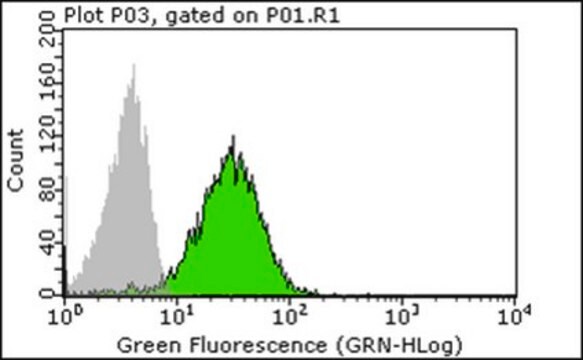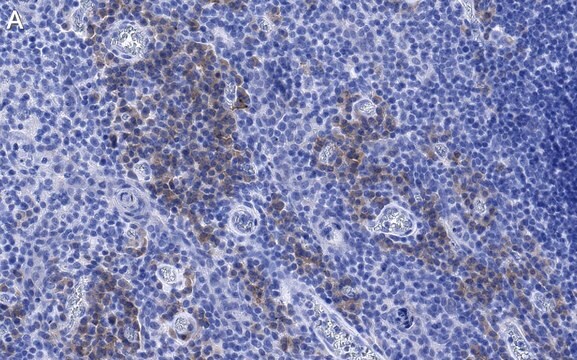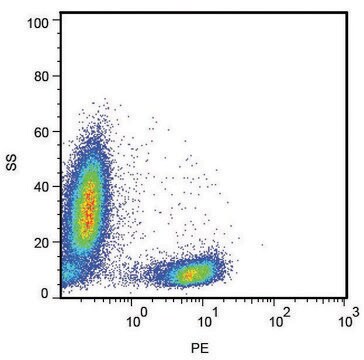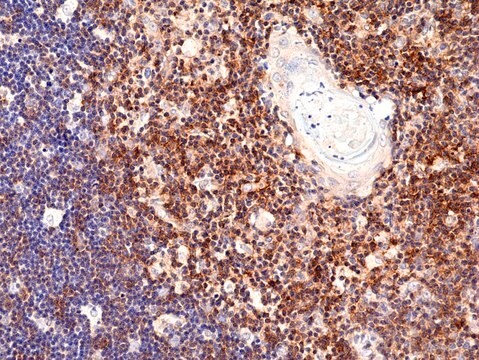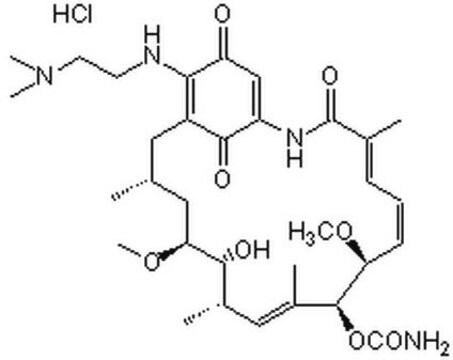MABF2089
Anti-CD28 Antibody, clone 37.51
clone 37.51, from hamster(Syrian)
Synonim(y):
T-cell-specific surface glycoprotein CD28
About This Item
Polecane produkty
pochodzenie biologiczne
hamster (Syrian)
forma przeciwciała
purified antibody
rodzaj przeciwciała
primary antibodies
klon
37.51, monoclonal
reaktywność gatunkowa
mouse
opakowanie
antibody small pack of 25 μg
metody
flow cytometry: suitable
immunoprecipitation (IP): suitable
western blot: suitable
numer dostępu NCBI
numer dostępu UniProt
docelowa modyfikacja potranslacyjna
unmodified
informacje o genach
mouse ... Cd28(12487)
Opis ogólny
Specyficzność
Immunogen
Zastosowanie
Flow Cytometry Analysis: A representative lot detected CD28 in Flow Cytometry applications (Gross, J.A., et. al. (1992). J Immunol. 149(2):380-8; Krummel, M.F., et. al. (1995). J Exp Med. 1;182(2):459-65).
Immunoprecipitation Analysis: A representative lot detected CD28 in Immunoprecipitation applications (Gross, J.A., et. al. (1992). J Immunol. 149(2):380-8).
Western Blotting Analysis: A representative lot detected CD28 in Western Blotting applications (Gross, J.A., et. al. (1992). J Immunol. 149(2):380-8
Jakość
Flow Cytometry Analysis: 1 µg of this antibody detected CD28 in 1X10E6 EL-4 T lymphoma cells.
Opis wartości docelowych
Postać fizyczna
Inne uwagi
Nie możesz znaleźć właściwego produktu?
Wypróbuj nasz Narzędzie selektora produktów.
Kod klasy składowania
12 - Non Combustible Liquids
Klasa zagrożenia wodnego (WGK)
WGK 2
Temperatura zapłonu (°F)
Not applicable
Temperatura zapłonu (°C)
Not applicable
Certyfikaty analizy (CoA)
Poszukaj Certyfikaty analizy (CoA), wpisując numer partii/serii produktów. Numery serii i partii można znaleźć na etykiecie produktu po słowach „seria” lub „partia”.
Masz już ten produkt?
Dokumenty związane z niedawno zakupionymi produktami zostały zamieszczone w Bibliotece dokumentów.
Nasz zespół naukowców ma doświadczenie we wszystkich obszarach badań, w tym w naukach przyrodniczych, materiałoznawstwie, syntezie chemicznej, chromatografii, analityce i wielu innych dziedzinach.
Skontaktuj się z zespołem ds. pomocy technicznej
